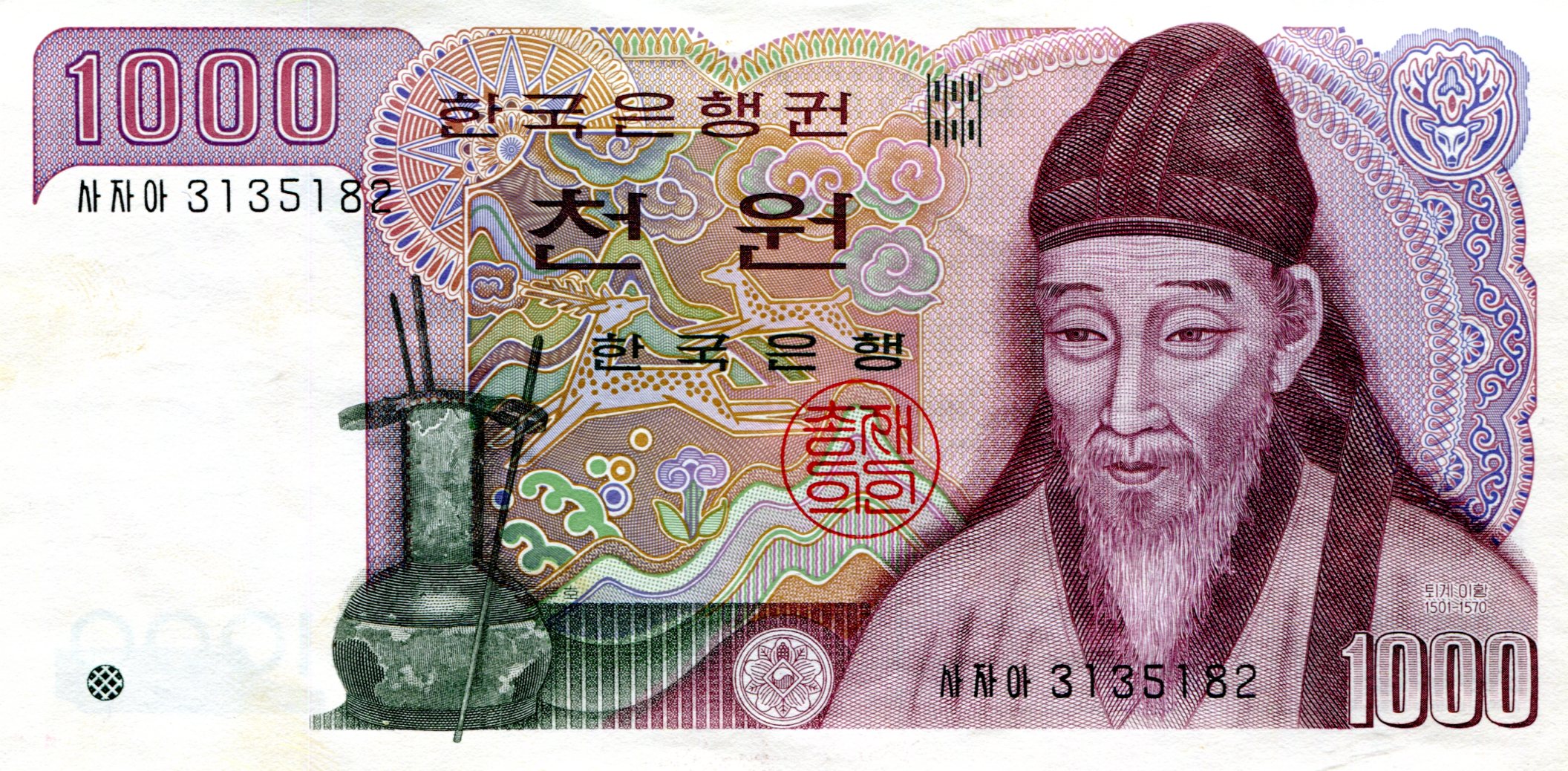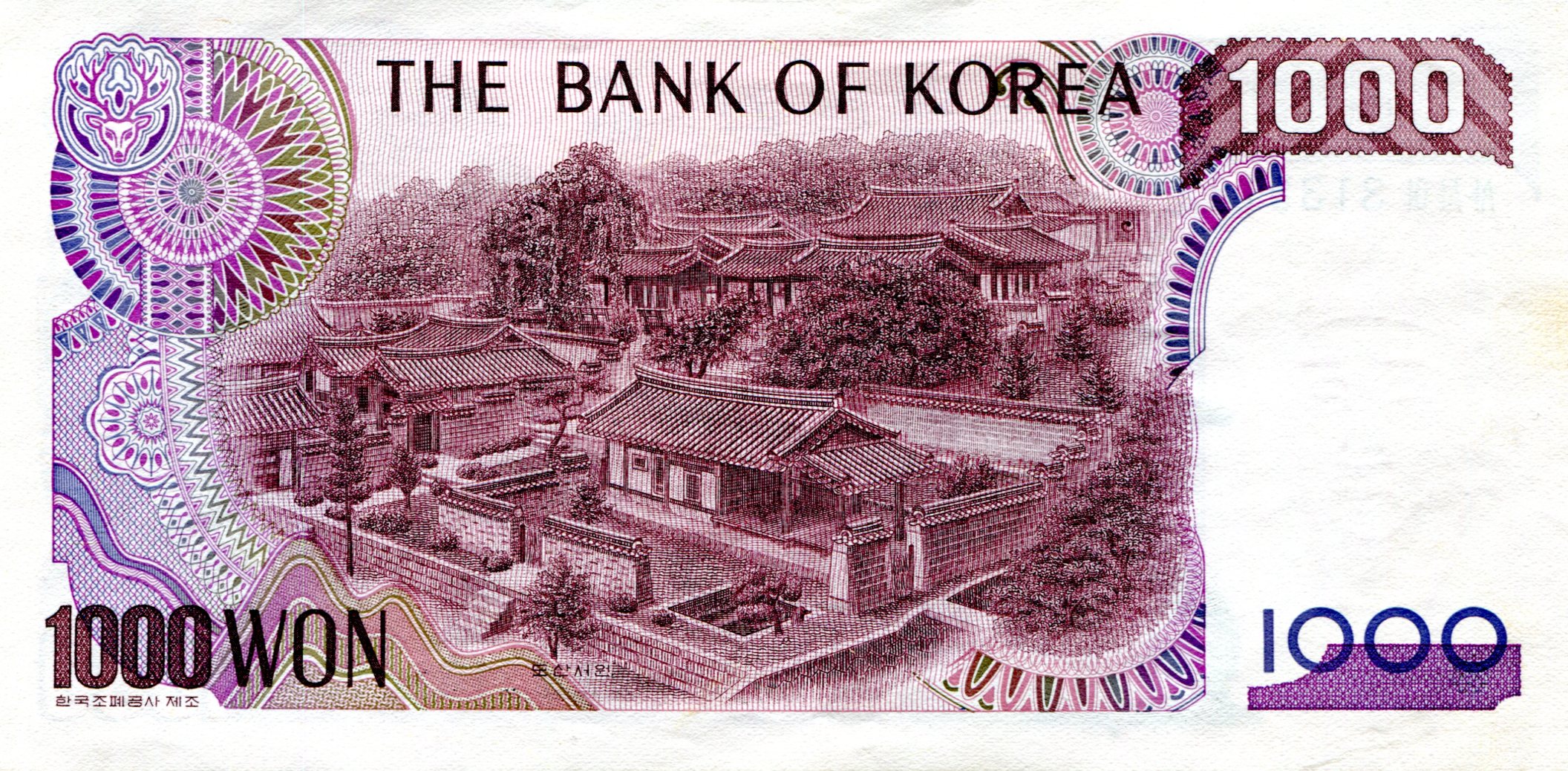I picked up this 1000 won note in South Korea in 1990. (₩ 1,000)
 I haven’t done well by holding on it, at least not financially. It seems inflation has been fairly consistent in that country for the last 30 years, and a handy inflation calculator for won — I’m still amazed what’s on line — tells me that you’d need ₩ 2,773 these days to have the same purchasing power.
I haven’t done well by holding on it, at least not financially. It seems inflation has been fairly consistent in that country for the last 30 years, and a handy inflation calculator for won — I’m still amazed what’s on line — tells me that you’d need ₩ 2,773 these days to have the same purchasing power.
Then again, ₩ 1000 = about 90 U.S. cents, so I haven’t lost a fortune by letting the value of my note erode over the years. It’s been worth it to me as a collector of small-potatoes banknotes, besides being a souvenir of my week on the Korean peninsula. Also, I like the aesthetics of the note.
Won is a cognate of the Chinese yuan and Japanese yen, essentially meaning “round.” The modern won is technically divided into 100 jeon, just as the Japanese yen is divided into 100 sen, but those are units about as useful as the U.S. mill.
My note is part of an older series, 1983-2002, but I can’t find any indication that it has been demonetized. The gentleman on the obverse is Yi Hwang (1501-1570), a prominent Korean Confucian scholar of his day.
That name is a McCune-Reischauer romanization, and Wiki at least says that he had no fewer than four different names: a Korean name, a pen name, a courtesy name and a posthumous name. In order, these are the names in hangul, just because I can: 이황, 퇴계, 경호, and 문순.
The reverse features, fittingly enough, the Dosan Seowon (Dosan Confucian Academy), established in 1574 in memory of Yi Hwang.
Lately (2019) the place was designated a World Heritage Site.